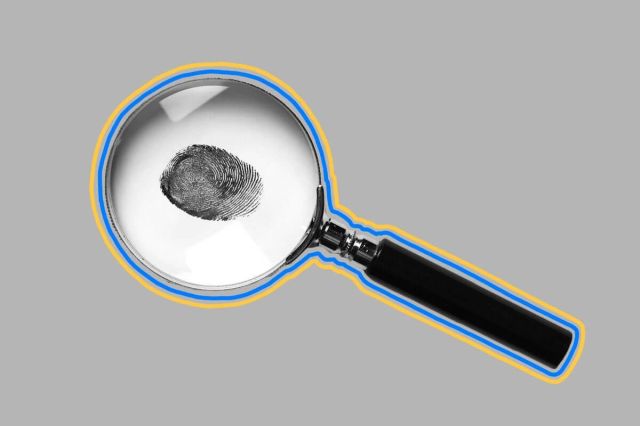
Your Fingerprints Contain Whorls, Arches, and Loops
Technically, the patterns of ridges on your fingertips are called dermatoglyphs, from the Greek roots derma (skin) and glyph (carving). Fingerprints are the impressions left by the dermatoglyphs, though people often refer to both the ridges and their impressions as fingerprints.
The ridges follow three universal patterns: loops, whorls, and arches. Loops are curved ridges that fall back on themselves in an elongated C shape, with the open ends of the C pointing either toward or away from the thumb. Whorls are ridges in concentric circles or spirals. Arches look like the contour of a mountain. Of the three types, loops are the most common (60% of fingerprints), followed by whorls (35%), and arches (5%).

It’s Almost Impossible To Change or Eliminate Fingerprints
Fingerprints don’t change pattern or naturally disappear over the course of a person’s life, and it’s incredibly difficult to get rid of fingerprints, as some famous criminals could attest. The gangster John Dillinger attempted to hide his identity by burning off his fingerprints with acid (it didn’t work). At least two other Depression-era murderers tried to obliterate their prints with knife cuts. All found out the hard way that it’s almost impossible to eliminate fingerprints on purpose. The ridges will eventually grow back into the same patterns.
However, there are a few scenarios in which someone may lack them. People with a genetic condition called adermatoglyphia are born without ridges in the skin of their fingertips, palms, or soles of their feet. Skin conditions like psoriasis and repetitive manual labor can also change or wear down the ridges. Some chemotherapy drugs cause hands to swell and blister, resulting in the loss of fingerprints.

Fingerprints Form Before You’re Born
Studies have suggested that genetic and environmental factors guide the formation of ridges on the fingers, hands, toes, and feet between the third and sixth months of fetal growth. Genes that control the development of dermal layers in these body parts seem to dictate the size, shape, and pattern of the ridges. The chemical balance in the mother’s uterus probably plays a role, too. All of these influences add up to the creation of a set of dermatoglyphs that is totally unique — even identical twins have different fingerprints. Though it should be noted that despite the fact that scientists have studied fingerprints for a few centuries, they still don’t agree on how they form.
More Interesting Reads

The Function of Fingerprints Is Still a Mystery
Scientists also don’t agree on why we have fingerprints in the first place, but they have some theories. For decades, biologists assumed that dermatoglyphs evolved to give people a better grip on things. Two University of Manchester researchers tested this idea in 2009 by running hard plastic sheets over their fingertips and measuring the amount of friction. They found that their ridges actually decreased the contact area between the fingertip and plastic, reducing grip power.
More recent research has suggested that fingerprints improve our sense of touch. For a 2021 study, researchers at Sweden’s Umeå University recorded 12 participants’ nerve responses while finely textured cards were run over their fingertips. The responses revealed hotspots of sensitivity that matched the ridge patterns of the subjects’ fingerprints — supporting the idea that they enhance our tactile feeling.

Animals Have Unique Fingerprints, Too
One reason that scientists thought fingerprints helped our grip ability is that other primates who climb and hang on to trees also have them. Gorillas, orangutans, and chimpanzees have dermatoglyphs on their fingers and toes that are unique to each individual.
Koalas also have fingerprints that look remarkably human, even though humans aren’t related to koalas. Biologists believe their dermatoglyphs represent convergent evolution, in which unrelated organisms independently develop similar traits.











